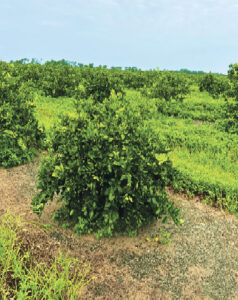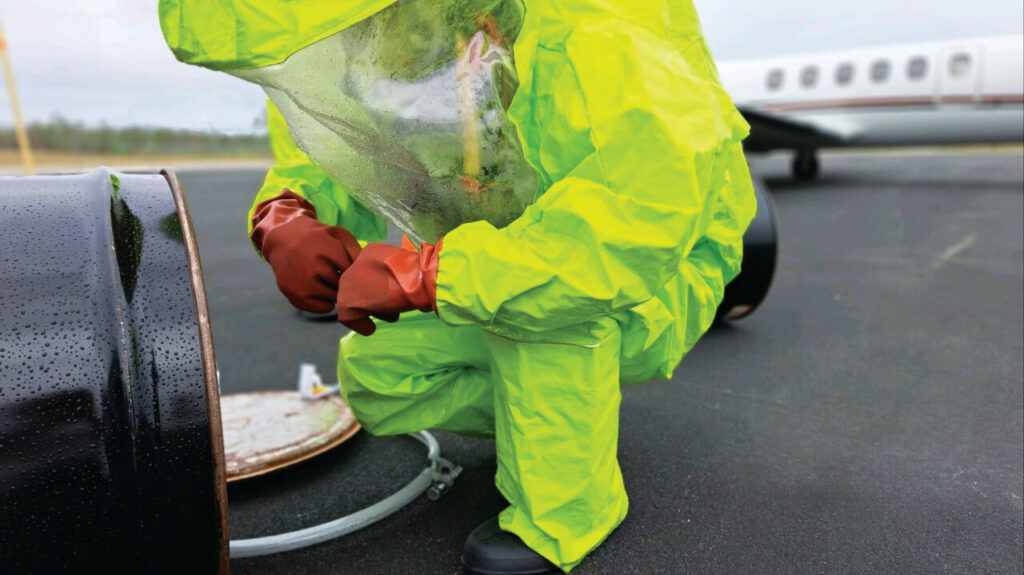By JOSH MORENO,
FluxTracer Project Manager,
REGENESIS

Permeable reactive barriers, or PRBs, are among the most frequently applied remedies for groundwater contamination.
Unfortunately, contaminant mass flux, or mass flux (Figure 1), the essential parameter that guides the selection and dosing of amendments used in a PRB, is often misunderstood, leading to poor remedial outcomes in many cases.
Measurement tools that provide a picture of contaminant mass flux through a PRB can better guide the amendment selection process, markedly improve performance efficiency, and reduce remediation project costs.
Use of PRBs in Groundwater Remediation and the role of mass flux
PRBs are routinely installed to prevent contaminant migration from an impacted site, reduce contaminants entering surface waters, or protect drinking water sources and surrounding properties.

Additionally, remedies involving multiple PRBs are commonly used to treat large, diffuse groundwater contaminant plumes where access to the plume is restricted by buildings, roadways, or other structures (Figures 2 and 3).
Knowing the mass flux is critical for engineering a successful PRB treatment. This parameter determines the amendment(s) needed to achieve the project goals and the dosing needed to attain the goals at the lowest possible cost.
Mass flux is directly tied to amendment consumption, dictating the length of time a remedy will remain effective.

Mass flux is rarely uniform, instead it is highly variable in an aquifer. Even within a thin slice of a contaminated aquifer where a PRB is installed, contaminant flux measurements typically span orders of magnitude.
Although remedial amendment selection and dosing must account for this variability to achieve the best result, its impact is frequently neglected.
Bulk aquifer measurement methods are not appropriate for estimating mass flux in PRBs


Remediation practitioners have historically relied on pumping tests or slug tests to measure hydraulic conductivity and estimate groundwater velocity. While these methods are fundamental for general aquifer characterization and testing/developing water supplies, they are generally not useful for in situ groundwater remediation.
These more-traditional methods can lead a project astray when used in modeling for in situ groundwater remediation.
Studies have shown that most contaminant mass making up a groundwater contaminant plume flows through mass flux zones occupying only a minor fraction (e.g., 5-10%) of the aquifer, even in homogenous sandy aquifers.
In contrast, pumping tests and slug tests produce average hydraulic conductivities representing relatively large aquifer volumes.
Contaminant concentration data are also averages, sampled from groundwater entering through screens from lengths ranging from 5 to 20 feet.
As a simplified example, consider a PRB placed to treat a PCE plume moving across the barrier location at an average flux of 10 mg/m2/day flux, calculated from one or two wells from 10 feet of vertical depth (i.e., the length of a typical monitoring well screen). A vastly different PRB design would be required for a mass flux evenly distributed across the barrier, as portrayed by an average, vs. a flux of 100 mg/m2/day occurring over only 10% of the PRB’s cross-sectional treatment area.

By mixing and averaging discrete mass flux zones with the bulk of the plume that is not carrying contaminants, the resolution of contaminant flux is lost, and contaminant transport becomes mischaracterized.
PRB designs not accounting for this mass flux variance can underdose the high-mass flux zones and place amendments where they are not needed, producing something nobody wants: an overdesigned PRB that doesn’t work.
FluxTracerTM flux mapping
tools now available
FluxTracerTM Flux Mapping Tool assists remediation practitioners in properly designing PRBs and other groundwater treatment programs.
FluxTracer is an easy-to-use passive flux measurement device that vertically delineates groundwater velocity and contaminant flux within existing monitoring wells.
FluxTracer uses sorbent materials spiked with alcohol tracers, segmented to identify discrete flux zones (Figure 4). These devices typically are deployed in a well for two weeks and then sampled at 1-foot intervals. Groundwater flux (i.e., Darcy velocity) is calculated from the tracer loss, and contaminant mass flux is calculated directly from the mass of contaminants that become sorbed during the two-week FluxTracer deployment window. Following analysis, the data are presented in a graphical form to aid the remediation design process (Figure 5).
Applying flux-informed
remedies at PRBs
The discrete information provided by FluxTracer and other passive flux measuring devices offer a much more detailed picture of contaminant mass flux across a PRB. With this more detailed picture of the contaminant transport zones controlling plume development and driving exposure risks, remediation strategies are much better suited to achieve their objectives. Over time, improved remedial outcomes and decreased project costs will be realized as discrete mass flux characterization enabled by these tools proliferates in the industry.●
Josh Moreno is the FluxTracer Project Manager at REGENESIS. Email him at jmoreno@regenesis.com.
















































